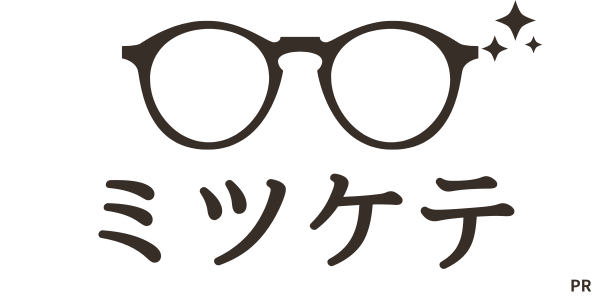Many believe that 6 million yen in savings at retirement is enough, but the reality is far harsher. More seniors are working into their 70s as living expenses and medical costs continue to rise. This article explains how much is actually required to live without working in old age and highlights the importance of strategic financial planning.
Estimated Living Expenses in Retirement
Living costs in old age vary depending on household structure and housing conditions. Based on government household surveys, a retired couple generally needs about 170,000 yen per month, or around 2.1 million yen per year.
Average Spending for Retired Couples
| Expense Category | Average Monthly Amount (yen) | Notes |
|---|---|---|
| Food | 65,000 | Higher if dining out frequently |
| Housing | 14,000 | Varies greatly depending on homeownership or renting |
| Utilities and Water | 20,000 | Higher in winter due to heating |
| Medical Expenses | 15,000 | Increases with age |
| Social/Leisure | 60,000 | Depends on lifestyle and hobbies |
| Total | 174,000 | Approx. 2.1 million per year |
This represents only the minimum level of expenses. If you wish to enjoy travel, hobbies, or give money to grandchildren, costs will increase significantly.
Why 6 Million Yen is Not Enough
Accumulating Shortfalls
Even if pensions cover most expenses, many households face an annual shortfall of about 500,000 yen. With 6 million yen in savings, funds would run out in about 12 years. For someone retiring at 65, savings would be depleted by around age 77.
Rising Medical and Nursing Care Costs
Medical expenses inevitably rise with age. If nursing care is needed, in-home care can cost 50,000–100,000 yen per month, while nursing facilities may require 150,000–250,000 yen monthly.
Impact of Inflation
As prices rise, daily necessities become more expensive. Food and utilities are especially vulnerable, and with fixed income, inflation significantly reduces purchasing power.
How Much is Actually Needed?
Estimated Retirement Funds
| Condition | Required Savings (yen) |
|---|---|
| Couple, pension only, average lifespan | 20–30 million |
| Single, pension only | 10–15 million |
| Homeowner | Several million less |
| Renting | Several million more |
This clearly shows that 6 million yen in savings is far from sufficient.
Life Expectancy and Savings Relationship
| Age | Average Remaining Years (Men) | Average Remaining Years (Women) |
|---|---|---|
| 65 | 19 years | 24 years |
| 75 | 12 years | 16 years |
| 85 | 6 years | 9 years |
This highlights the need to prepare for the risk of living longer than expected.
How to Secure Retirement Funds
Preparing Early
- Use iDeCo or NISA accounts to save with tax benefits
- Reduce fixed living costs to increase savings capacity
- Manage retirement bonuses carefully, avoiding lump-sum spending
After Retirement
- Stay healthy and continue working until around 70 if possible
- Utilize home equity through reverse mortgages
- Prioritize spending to maintain quality of life without waste
Example of Retirement Fund Strategies
| Method | Benefits | Cautions |
|---|---|---|
| iDeCo | Major tax advantages | Cannot withdraw until age 60 |
| NISA | Tax-free investment gains | Risk of losses |
| Reverse Mortgage | Converts home into liquid funds | Impacts inheritance |
| Continued Work | Provides stable income | Depends on health and stamina |
Combining multiple strategies rather than relying on one is the key to financial stability.
Medical and Nursing Care Costs in Reality
Medical and nursing expenses are unavoidable in old age and must be factored in separately from daily living costs.
Average Monthly Medical and Care Costs
| Expense | Average Cost (yen) | Notes |
|---|---|---|
| Outpatient Care | 6,000 | Higher with chronic illness |
| Hospitalization | 200,000 per stay | Covered partly by health insurance |
| Home Care | 50,000–100,000 | Helper and day service costs |
| Nursing Facility | 150,000–250,000 | Private rooms can be more expensive |
Ignoring these costs can quickly deplete savings.
Longevity Risks in an Aging Society
Japan is one of the world’s longest-living nations. Male life expectancy exceeds 81 years, and female life expectancy exceeds 87. The gap between life expectancy and healthy life expectancy is about 10 years, meaning many people will need medical and nursing care during the last decade of life.
Thus, retirement funds must be planned not just for average life expectancy, but also for the possibility of living significantly longer. Living longer is a blessing, but without sufficient funds, quality of life can decline sharply.
Conclusion
Having 6 million yen in savings at retirement is not enough to ensure financial security.
- Couples need at least 20 million yen or more
- Singles need at least 10 million yen or more
With this level of preparation, it becomes possible to handle medical and nursing care risks while maintaining a comfortable standard of living.
The key to peace of mind in retirement is early preparation and careful financial planning.




